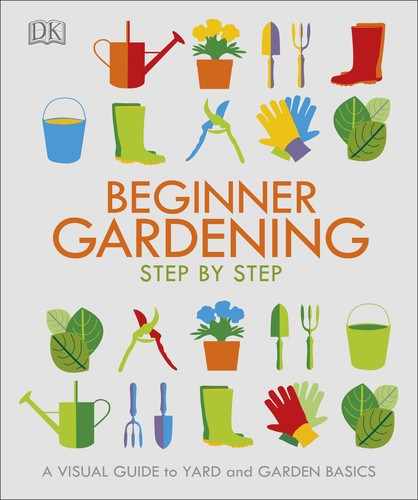
1
Mark out a cross with stakes and
string. Dig trenches following the
string lines, slightly wider and not
quite as deep as the bricks to allow
space for the bricks to settle. Use a
hammer handle to firm in the bricks.
PLANTING
AN HERB GARDEN
This formal herb feature takes only a day to build
and a season to mature. Here, bricks have been
used to edge the beds and divide them into
quarters. A potted bay tree forms the centerpiece.
YOU WILL NEED
• pot-grown herbs, e.g., bay tree,
camomile, chives, rosemary,
sage, thyme
• garden stakes and string
• bricks
• hammer
• garden compost
• watering can
SEE ALSO
• HERBS FROM SEED >> 198/201
• GROW HERB CUTTINGS >> 210/213
• DIVIDING HERBS >> 214/215
COMMON HERBS
Commonly grown culinary herbs
include basil, chervil, cilantro, dill,
marjoram, oregano, parsley, sage,
and arugula. Some herbs, such as
mint, can quickly take over an
herb garden so are best confined
in pots.
US_204-205_PlantHerbGarden.indd 204 07/09/2018 16:35

HERBS // PLANTING AN HERB GARDEN 204–205
2
Finish the last quarter and bed the bricks
down securely, packing the soil firmly
against them (no need to mortar them in). If
you wish to have a plant in the center of the
feature, make sure that you leave space for it.
4
Finish o the design with a central
plant—a bay tree, which can be
clipped into shape, has been used
here. Water all the plants regularly
until they are fully established,
especially in hot, dry weather.
This is a handy
way to use up
old or spare
bricks in an
herb garden
3
Arrange the plants in their pots before
they go in the ground, so you can adjust
the spacing if required. Water each plant
thoroughly before removing it from its pot.
Make planting holes and insert the plants.
Water in well.
Bay needs regular
clipping as it can get
very big and quickly
outgrow its space
US_204-205_PlantHerbGarden.indd 205 07/09/2018 16:35
..................Content has been hidden....................
You can't read the all page of ebook, please click here login for view all page.
